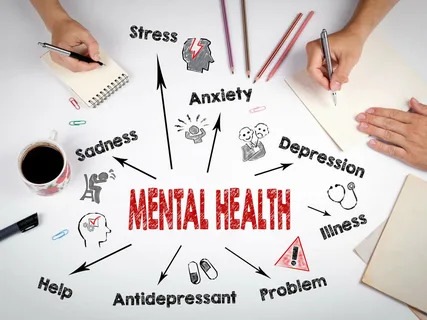Designing an Effective Mental Health Website Design: Key Considerations

In the digital age, having a well-designed website is crucial for mental health professionals. An effective website not only serves as an online presence but also helps in building trust with potential clients, providing valuable information, and facilitating appointments. This blog will explore the essential elements of mental health website design, focusing on the unique needs of professionals in psychotherapy and psychiatry.
Understanding the Audience
The first step for mental health website design professionals is to understand the target audience. Clients seeking mental health services are often dealing with sensitive issues and may feel vulnerable. Therefore, the website should convey a sense of safety, trust, and professionalism.
Key Elements of a Mental Health Website Design
User-Friendly Navigation
User-friendly navigation is critical. Visitors should be able to find information quickly and easily. Clear menus, well-organized content, and an intuitive layout contribute to a positive user experience.
Professional and Welcoming Design
The design should be professional yet welcoming. Use calming colors, simple fonts, and a clean layout. Avoid clutter and ensure that the design elements are cohesive. High-quality images and graphics can enhance the overall aesthetic.
Informative Content
Content is king, especially for mental health websites. Provide comprehensive information about the services offered, the professionals’ qualifications, and the therapeutic approaches used. Blog posts, articles, and FAQs can be valuable resources for potential clients.
Accessibility
Ensure that the website is accessible to everyone, including those with disabilities. This includes using alt text for images, providing transcripts for videos, and ensuring that the website can be navigated using keyboard shortcuts.
Confidentiality and Security
Confidentiality and security are paramount in the mental health field. Make sure the website complies with HIPAA regulations and other relevant privacy laws. Secure online forms and encrypted data transmission are essential.
Specific Design Considerations for Different Professionals
Website Design for Mental Health Professionals
Website design for mental health professionals, including therapists and counselors, requires a website that reflects their practice’s nature. Here are some specific design considerations:
-
Personal Profiles: Highlight the credentials and experience of each professional. Personal stories and testimonials can build trust.
-
Service Descriptions: Clearly outline the services provided, such as individual therapy, group therapy, and workshops.
-
Booking System: An online booking system simplifies the process for clients to schedule appointments.
Psychotherapy Website Design
For psychotherapists, the website should focus on the therapeutic relationship. Important aspects include:
-
Therapeutic Approaches: Explain the different therapeutic approaches used, such as CBT, DBT, or EMDR.
-
Resources and Tools: Provide resources like worksheets, videos, and self-help tools that clients can use between sessions.
-
Blog and Articles: Regularly update the blog with articles on mental health topics, coping strategies, and therapy success stories.
Psychiatrist Website Design
Psychiatrists have a unique set of needs for their website, including:
-
Medication Management: Information about medication management, side effects, and patient education.
-
Integrated Care: Details about collaboration with other healthcare providers for comprehensive care.
-
Research and Publications: Share any research, publications, or contributions to the field of psychiatry.
Enhancing User Engagement
Interactive Features
Interactive features such as quizzes, self-assessment tools, and webinars can engage visitors and provide valuable insights.
Testimonials and Reviews
Client testimonials and reviews can build credibility and trust. Feature these prominently on the website.
Blog and Resource Section
Maintain an active blog and resource section to keep the website dynamic and informative. This can also improve SEO and attract more visitors.
Mobile Optimization
With the increasing use of smartphones, it is essential that the website is mobile-friendly. Ensure that the design is responsive and that all features work seamlessly on mobile devices.
Search Engine Optimization (SEO)
Implementing SEO best practices is crucial for your mental health website design. By using relevant keywords like “mental health website design,” optimizing meta tags, and ensuring fast load times, you can significantly improve your website’s search engine ranking and visibility.
Conclusion
Designing a psychiatrist website design requires careful consideration of the unique needs of mental health professionals and their clients. By focusing on user-friendly navigation, professional design, informative content, accessibility, confidentiality, and engagement, you can create an effective and trustworthy online presence.
If you are looking to design an optimal mental health website, Good Man Creatives can help you create a site that meets all these essential criteria. Contact us today to get started!

